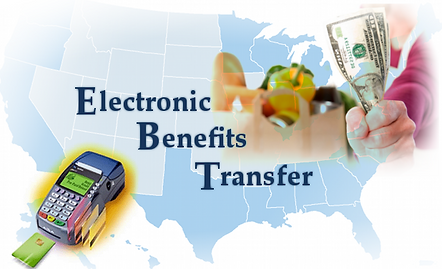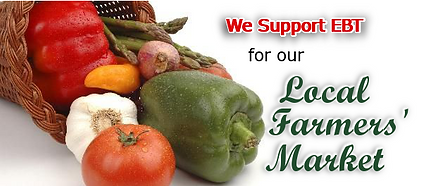
EBT Application Services offers the most innovative EBT SNAP, EMV Credit Card, Debt, ApplePay, Android Pay and Google Wallet processing machines in the industry.
For more help or information, call at (855) 378-9991.
SNAP recipients electronically receive SNAP benefits on an EBT Card, which operates like a debit card, to buy eligible food at stores authorized by the Food and Nutrition Service.
In order to complete a transaction, the customer swipes the card in a point-of-sale device (POS) and enters a four digit Personal Identification Number (PIN). The store clerk enters the exact amount of the purchase on the POS device. This amount is deducted from the household’s EBT SNAP account and credited within two banking days to the retailer’s bank account. EBT cards are interoperable, which means that an EBT card can be used in any authorized store in the United States regardless of the state it was issued, including the District of Columbia, Guam, and the U.S. Virgin Islands. In Puerto Rico, the Supplemental Nutrition Assistance Program was replaced in 1982 by a block grant program, called the Nutrition Assistance Program. Puerto Rico is not interoperable with other States.

Accepting EBT Cards at My Store You must apply and receive approval for your store from USDA’s Food and Nutrition Service before you can accept SNAP EBT cards. Once your store is authorized under your ownership, you must arrange to accept EBT cards. Most retailers are required to pay for their EBT equipment and services, whether they obtain it from their State EBT Processor or a third party.
Some stores are exempt from this requirement and are eligible for free State-supplied POS equipment; exempt retailers include only farmers’ markets, direct marketing farmers, military commissaries, non-profit food buying cooperatives and community meal services and programs. When making arrangements to accept EBT you can use your existing point-of-sale equipment or lease/purchase point-of-sale devices (click here). If you have existing equipment, check with your vendor to see if it can be programmed to accept both SNAP EBT and commercial debit/credit transactions.
Please note that you should review all costs with any vendor that provides a point of sale equipment and services prior to signing an agreement as the government does not reimburse you for these costs.
Retailers are required to complete an application and agree to terms and conditions at the time of enrollment which includes transaction processing fees.

Below are the SNAP retailer provisions that are effective immediately.
EFFECTIVE IMMEDIATELY:
SNAP benefits cannot be used to pay bottle/can deposits unless it is a State-required fee. SNAP benefits cannot be used to pay for a deposit fee unless it is a fee the State requires customers to pay to purchase food in a returnable container. Deposit fees added by manufacturers cannot be paid for with SNAP benefits, even if the fee is included in the shelf price of the product. Currently, only 10 States have some type of State deposit fee requirement. These States are California, Connecticut, Hawaii, Iowa, Massachusetts, Maine, Michigan, New York, Oregon, and Vermont.
SNAP retailers must pay for their own Electronic Benefit Transfer (EBT) equipment. Retailers will no longer be offered free EBT equipment, supplies and related services (“EBT equipment and services”) to participate in SNAP. Retailers that become SNAP-authorized after March 21, 2014, must pay for their own EBT equipment and services. Retailers authorized on or before March 21, 2014, and who have already been given free EBT equipment and services by the State may, at the State’s option, continue to use the EBT equipment and services for free until September 21, 2014. Such SNAP-authorized retailers should arrange for lease or purchase of EBT equipment and services as soon as they can (click here) in order to ensure continued participation in SNAP. States may provide retailers that use free EBT equipment and services with further instructions and deadlines. EXCEPTIONS: Eligible farmers’ markets, direct marketing farmers, military commissaries, non-profit cooperatives or organizations, group living arrangements, treatment centers, and prepared meal services may continue to qualify for free EBT equipment and services until further notice.
New SNAP retailers cannot use manual vouchers to redeem SNAP benefits. Except in disasters or in the event of an EBT system failure, manual vouchers will no longer be allowed as a way to accept SNAP benefits. Retailers that become SNAP-authorized after March 21, 2014, can no longer use manual vouchers for ongoing SNAP business. Instead, all new SNAP retailers must redeem benefits electronically through a commercial point-of-sale device, which they must obtain and pay for themselves as discussed above. Retailers authorized before March 21, 2014, and who are already using manual vouchers for ongoing business may continue to do so until further notice. EXCEPTIONS: Eligible farmers’ markets, direct marketing farmers, military commissaries, non-profit cooperatives or organizations, group living arrangements, treatment centers, and prepared meal services may use manual vouchers until further notice.
SNAP benefits may be used to purchase Community-Supported Agriculture shares. Both non-profit and for-profit farmers’ markets and direct marketing farmers that operate using a Community-Supported Agriculture model may accept payment up to 14 days before delivering the food to SNAP customers or making the food available for pickup. To read the full text of the Omnibus Farm Bill Implementation Memo, go to http://www.fns.usda.gov/snap/policy.